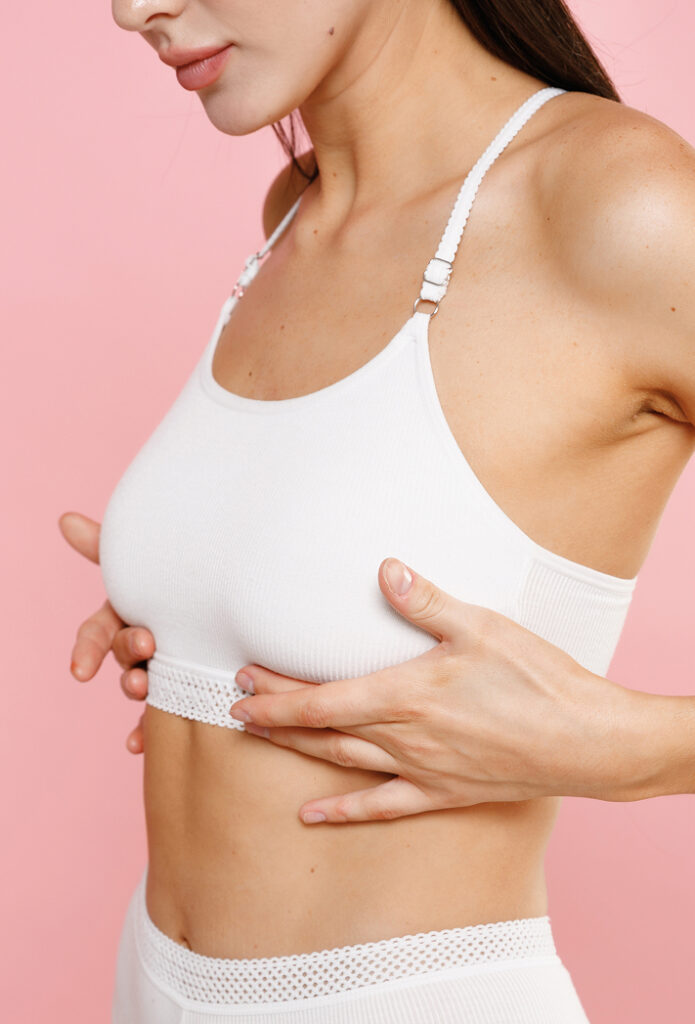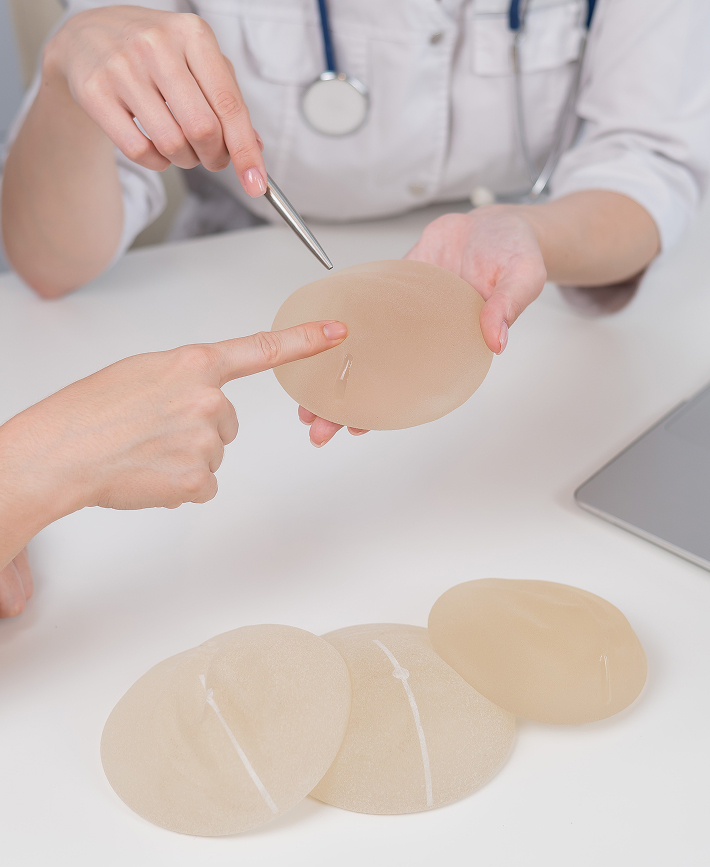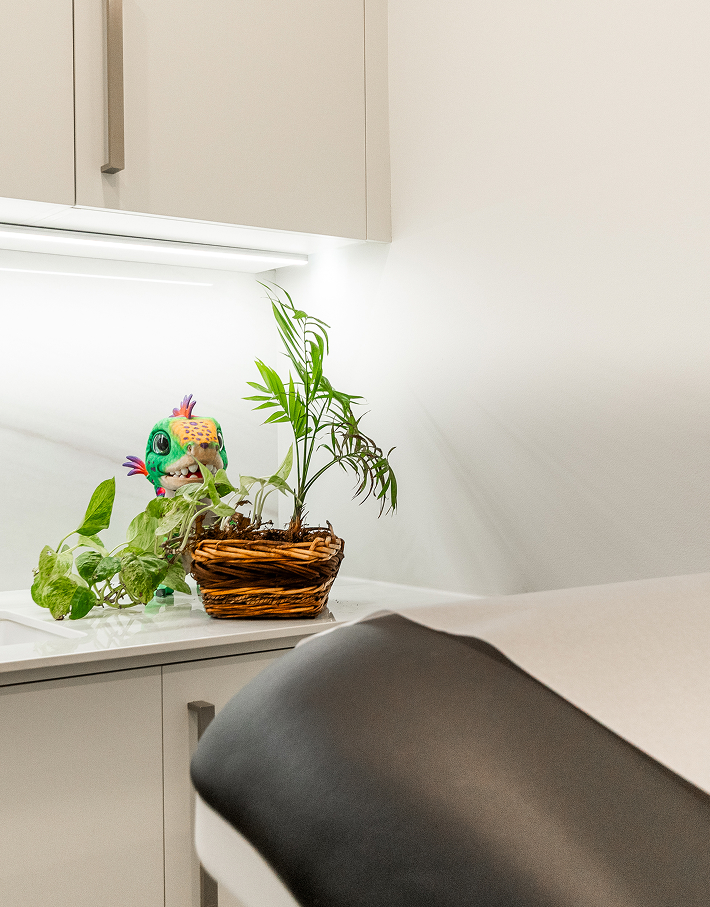History and Philosophy
A journey guided by listening to patients
A practice without breast implants
It was in 2018 that Dr. Stephen Nicolaidis performed his first explantation, somewhat by chance. One of his own breast implant patients —without medical complications or symptoms—had simply wanted to remove her implants, which she felt were not part of her personality. Dr. Nicolaidis reluctantly complied. Soon after, other patients presented to his clinic, this time with symptoms of breast implant illness (BII). And so it began.
Initially unfamiliar with this condition, Dr. Nicolaidis was struck by the significant improvement in the health of many patients after their explantation. This clinical reality prompted him to deepen his understanding of the phenomenon, to examine risk factors, and to challenge certain established practices. He then set out to better understand this still poorly understood syndrome.
An ethical shift
For more than two years, Dr. Nicolaidis continued to insert and remove breast implants while studying the phenomenon—a duality that raised questions for some BII patients. Dr. Nicolaidis sought to understand why some patients develop breast implant illness (BII) and others do not. In other words, he was interested in risk factors for prevention.
In October 2020, he presented his “Prospective Study of 182 Patients Undergoing Capsulectomy for BII: Three Reasons to Perform Capsulectomies for Patients with BII” at the American Society of Plastic Surgeons (ASPS) meeting and in 2021 at the 1st Breast Implant Health Summit.
By early 2021, Dr. Nicolaidis was doing more explantation procedures than augmentations. As he was trying to figure out the risk factors for developing BII, he started seeing patients with no apparent risk factors who still developed BII.
Unable to predict which women might develop BII, Dr. Nicolaidis made a decision based on prudence and medical responsibility: he stopped performing breast implants altogether in May 2021. After all, the hypocratic oath reads: “Do no harm”.
A specialized center for all women
His rigorous and consistent approach quickly earned him national recognition. Today, Dr. Nicolaidis welcomes patients from across the country for explantation, as well as from abroad: patients from the United States, France, the United Kingdom, and Hong Kong.
Given the considerable number of patients now coming from outside Montreal to have their explant surgery with Dr. Nicolaidis, the idea and the need to create an “explant center” with easier access to accommodation and care arose. After a long search for the ideal location, the ideal place was found in the heart of the Village in Montreal. The Montreal Explant Center opened its doors in November 2023. Located less than two kilometers from the CHUM Hospital, the center includes a small, welcoming cottage, designed to offer support and peace of mind before and after the procedure.

Need more information?
The History of Breast Implants
The pre-implant era: between exploration
and disasters
and disasters
Before the advent of modern breast implants, various substances and surgical techniques were explored to increase breast volume. These attempts at aesthetic improvement were largely characterized by serious complications and disastrous results.
In 1889, an attempt was made to achieve breast augmentation using paraffin and petroleum jelly injections. The results were disastrous, including a severe, chronic, and disfiguring inflammatory response.
Subsequently, between 1900 and 1950, a wide range of materials were tried without success. Then, in the early 1950s, injections of free liquid silicone became popular, particularly in Japan. Although initially promising, they led to disastrous outcomes due to the formation of silicone granulomas and severe hardening of the breast, often requiring mastectomy.
Silicone breast implants
Silicone gel breast implants were introduced in 1962 by Cronin and Gerow for cosmetic purposes. By the following year, some patients were already complaining of various symptoms. In Japan, the 1964 report by Miyoshi et al. referred to “human adjuvant disease (HAD)” associated with exposure to foreign substances, particularly for cosmetic purposes, that can act as adjuvants. Among these substances was silicone.
Unfortunately, these concerns were largely ignored by plastic surgeons and implant manufacturers, who claimed that implants were perfectly safe. At the time, it was common to tell patients, “The problem is in your head.”
Technical innovations and increased concerns
In the 1970s, textured (rough-surfaced) implants were introduced to reduce the incidence of capsular contracture. Despite these innovations, patients continued to report systemic symptoms and “connective tissue disorders” that they associated with their implants.
These concerns led to the withdrawal of silicone gel implants by the FDA (the American equivalent of Health Canada) in 1992, due to insufficient data to confirm their safety.
However, confusion persisted: some studies concluded that the implants were safe, while others linked them to serious complications. The problem? Many studies supporting the implants’ safety were funded by the manufacturers themselves or conducted by industry-linked experts. In other words, major conflicts of interest undermined the credibility of this research.
Return to the market and new public health scandal
In 2006, under pressure from the industry and based on these disputed studies, the FDA reauthorized the sale of silicone implants. But complaints persisted. Once again, thousands of women suffering from symptoms were told, “It’s all in your head…”
Then, in 2011, the alert changed in nature: cases of anaplastic large cell lymphoma (ALCL) were identified in women with textured implants. In 2016, the link between textured implants and this cancer became widely recognized. In 2019, Health Canada withdrew Allergan’s Biocell implants, responsible for 85% of global cases of breast implant-associated ALCL (BIA-ALCL). Other countries, including the United States and France, quickly followed.
It is now accepted that all types of textured implants, regardless of manufacturer, may be linked to this rare but serious cancer.
The power of patients and the progressive recognition of BII
Thanks to social media and the mobilization of thousands of women, breast implant illness (BII) is gaining visibility. Today, it is recognized by the FDA and several Plastic Surgery associations around the world—although its nature remains complex and multifactorial.

A new approach: listening, caring and understanding
Faced with the inability of manufacturers and medical authorities to recognize this condition for nearly 60 years, Dr. Stephen Nicolaidis chose to focus a great deal of his practice on breast explantation with simultaneous breast lifts.
Its objectives:
- Relieve patients suffering from BII,
- Improve their physical and psychological well-being,
- Better understand this disease that is still too little known.
His approach aims to ensure that each woman feels heard, respected and supported throughout her surgical journey.


